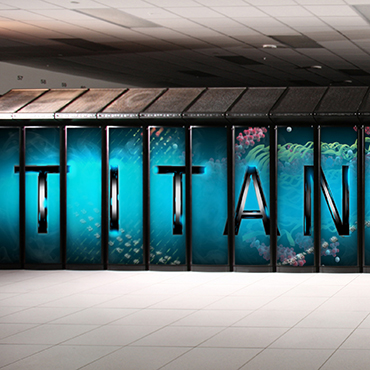IARPA awards contracts for supercomputer development

"Cryogenic" systems could bring currently unthinkable computing power into the realm of possibility.

The federal government has been pushing to develop an exascale supercomputing system, which would perform at a rate 50 times that of the Energy Department's Titan supercomputer.
The intelligence community's research arm is moving forward in its effort to develop a new type of superconducting supercomputer that would use exponentially less power and floor space.
Officials at the Intelligence Advanced Research Projects Activity, part of the Office of the Director of National Intelligence, said on Dec. 3 that they had awarded three research contracts to support the first phase of the Cryogenic Computing Complexity (C3) program. The program aims to develop a small-scale supercooled supercomputer prototype.
The contract announcements -- which involve teams led by IBM, Raytheon BBN Technologies and Northrop Grumman -- came 18 months after IARPA solicited proposals for innovations that could help the United States become the first nation to break the exaflop barrier in supercomputing. The cryogenic-based technology could one day replace current high-performance computers whose power and cooling demands "are rapidly becoming unmanageable problems," according to ODNI's solicitation.
Marc Manheimer, C3 program manager at IARPA, said the awards are part of a two-phase process for developing higher-performance successors to the federal government's current crop of supercomputers.
In an interview with FCW, Manheimer said supercooled supercomputers might use as little as 1/20th of the space that massive high-performance supercomputers, such as the Energy Department's Titan, currently need. They would also use substantially less power.
He estimated that a supercooled machine would provide 100 petaflops of performance for about 200 kilowatts of electricity. (A petaflop is 1 quadrillion floating point operations per second.) Titan uses 8.2 megawatts of power to hit 20 petaflops, so a C3 system could theoretically provide five times the performance for 1/40th of the power.
The smaller size and lower power consumption would allow more flexibility in housing the machines, Manheimer said. High-performance computers have traditionally been located at large dedicated sites at DOE's various national labs.
The federal government has been pushing to develop an exascale supercomputing system -- one capable of 1 exaflop, or 1 quintillion, floating point operations per second -- by 2020. Put another way, an exaflop equals 1,000 petaflops -- or the equivalent of 50 Titan systems.
Exascale computing could enable intelligence agencies to crack ever-stronger encryption systems and analyze truly big data.
"Computers based on superconducting logic integrated with new kinds of cryogenic memory will allow expansion of current computing facilities while staying within space and energy budgets, and may enable supercomputer development beyond the exascale," Manheimer said.
According to IARPA's announcement, significant technical obstacles had previously prevented serious exploration of superconducting computing, but recent innovations have created foundations for a major breakthrough.
During the initial three-year phase of the C3 program, IARPA-funded researchers will develop the critical components for the memory and logic subsystems and plan the prototype computer, with the goal of later scaling and integrating the components into a working computer and testing its performance using a set of standard benchmarking programs, Manheimer said.
IARPA intends to issue a second solicitation in the third year of the first phase for further development. The winners of that bidding process won't necessarily be the same three companies that won the first-phase contracts, he added.
NEXT STORY: Halvorsen: JRSS tests reveal solid backbone





